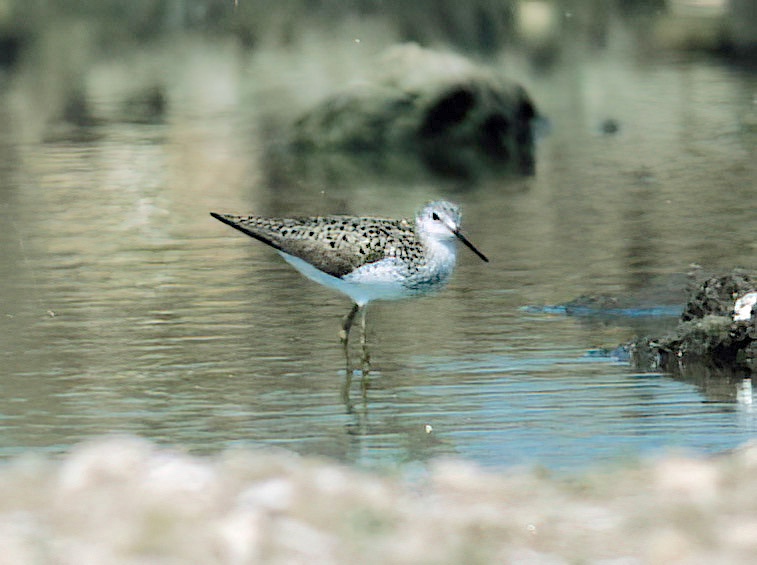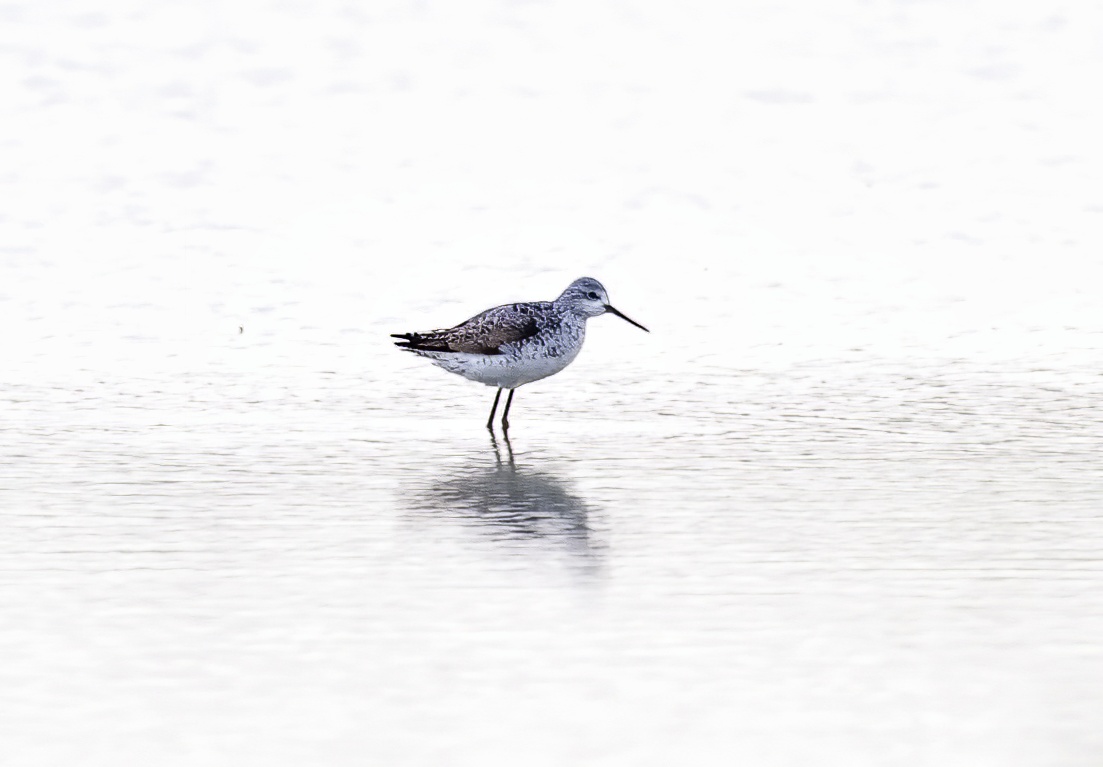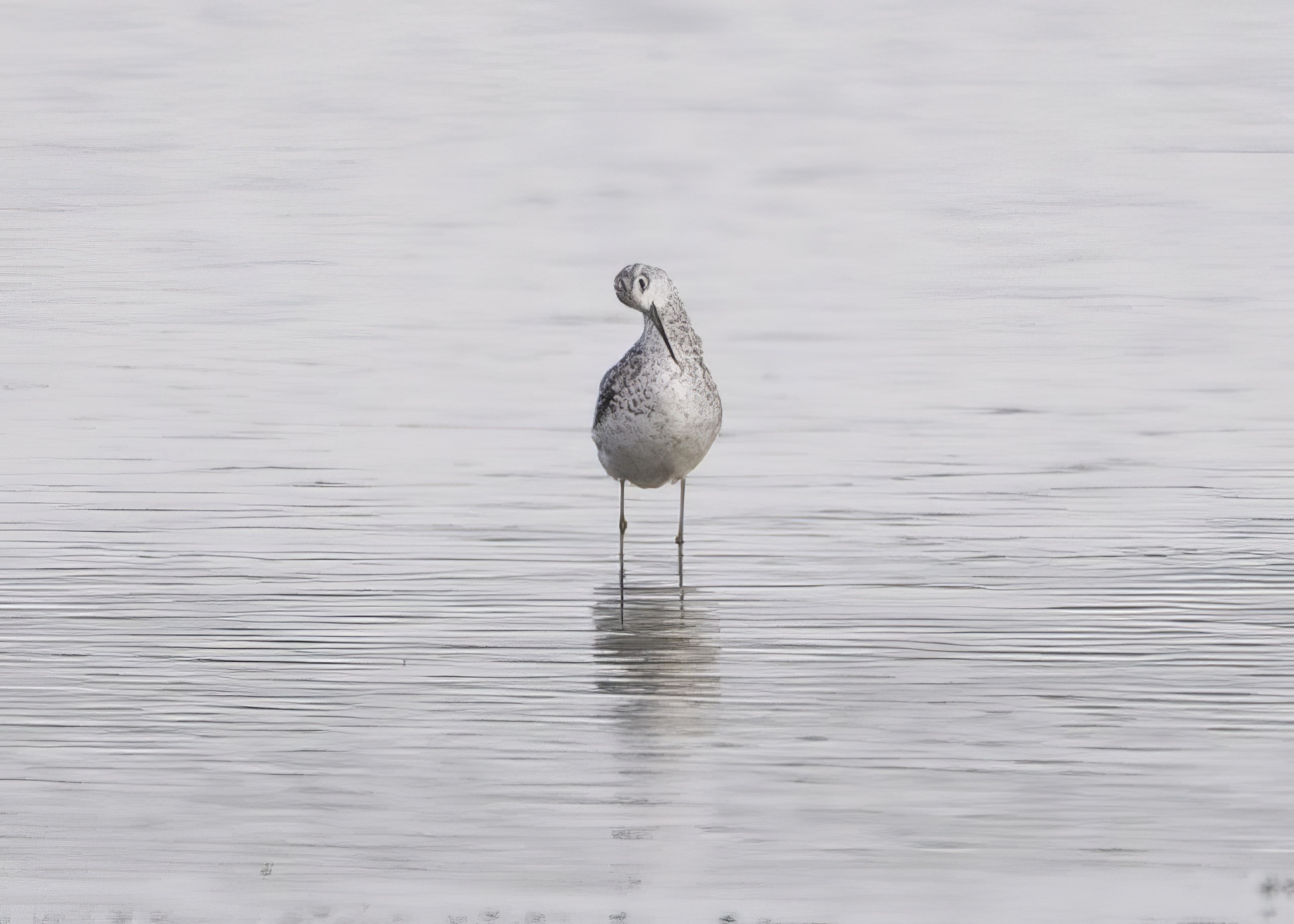Marsh Sandpiper Tringa stagnatalis



First recorded in August 1954 at Welland Mouth on The Wash, the second was 33 years later in virtually the same place, this time at the Witham Mouth in August 1987 on exactly the same day in August. The bird was resting at high tide on mud in loose association with Redshanks, Greenshanks, Black-tailed Godwits and other species, and it was under observation for about forty minutes before it flew off up the estuary. This was only the sixth for Britain. Since then they have remained a vagrant with further records in May 1992, July 2011 and July 2017. The individual in 2011 was seen twice at Alkborough Flats and presumed the same at Boultham Mere in August 2011, having spent the intervening time at Blacktoft Sands, Yorkshire. The 2011 bird was a moulting adult, the one in 2017 was a juvenile.
Formerly a very rare vagrant to Britain (with just five records to 1949), numbers have increased since the mid-1970s in line with a marked range extension into northern and eastern Europe. Since the modern recording era began in 1950 there have been 144 UK records up to 2020 averaging about three per year. The peak month of occurrence is August when more than 40 have been recorded in the UK.
Marsh Sandpipers breed in the Ukraine and western Russia, occasionally Finland and the Baltic countries. Further east it breeds in the forest-steppe region of Siberia to Mongolia and northeast China. It winters throughout sub0Saharan Africa, especially east Africa, and the Indian sub-continent east to south China; also Australia. Interestingly in 1986 a Marsh Sandpiper in Denmark actually copulated with a Redshank that could have posed an identification headaches if a hybrid had resulted.
| Site | First date | Last date | Count | Notes |
| Welland Mouth, Holbeach St. Mark's | 08/08/1954 | - | 1 | |
| Witham Mouth, The Wash | 08/08/1987 | 15/08/1987 | 1 | |
| Bardney Pits | 18/05/1992 | 19/05/1992 | 1 | Adult |
| Alkborough Flats | 11/07/2011 | 12/07/2011 | 1 | Adult |
| Alkborough Flats | 21/07/2011 | - | 1 | Same bird as 11th/12th July |
| Boultham Mere | 04/08/2011 | - | 1 | Same bird as 11th/12th July |
| Freiston Shore | 25/07/2017 | - | 1 | 1CY bird |
Finder’s report: Marsh Sandpiper at Welland Mouth, August 8th, 1954, first county record.
by I. C. T. Nisbet (Account taken from British Birds 48: p138)
Note: Original note © British Birds and reproduced here with permission. This description pre-dates the formation of the Rarities Committee and records of rarities in the UK were then essentially assessed and published by the editors of British Birds.
Circumstances
On 8th August 1954, together with J. Cunningham, D. Farren and Miss W. M. Irving, I observed a Marsh Sandpiper (Tringa stagnatilis) in the Welland estuary near Holbeach St. Marks, Lincolnshire. The bird was resting at high tide on mud, in loose association with Redshanks (T. totanus), Greenshanks (T. nebularia), Black-tailed Godwits (Limosa limosa) and other species, and it was under observation for about forty minutes before it flew off up the estuary. It was rather shy, and we were unable to watch it at ranges less than about sixty yards, but in excellent light we were able to compare it critically with Greenshanks in the same area. A full description was obtained, of which the more important features are as follows:
General appearance somewhat Greenshank-like, but distinctly slighter, with very slender neck and head; legs rather longer, the bird appearing to stand appreciably higher off the ground; bill very long and very slender, appearing quite straight. Forehead, much of face, front of neck and whole under-parts dazzlingly white, unmarked except perhaps at the sides of the breast; crown, nape, and hind-neck rather dark grey, extending forward a little round the neck just below the base of the head. Upper-parts rather dark,
conspicuously mottled and streaked buff on a blackish ground, giving a general dark brownish-grey appearance in poor light, but appearing almost black when the bird faced the sun. In some lights the bird appeared conspicuously black and white. When stretching, however, the paler mantle and secondaries contrasted with the dark primaries, and in flight the wings appeared much paler (uniform greyish—D.F.). Flight pattern much as Greenshank's, but more slender and rakish, with the slender legs extending well beyond the tail, much as in a Spotted Redshank (T. erythropus). When on the ground, size approximated to that of Redshank (D.F.) or rather smaller (J.C., I.C.T.N.), but legs longer and body slimmer and shorter. The bird was silent on rising and no call-note was heard.
References
Keightley, S. (undated). Accounts of Lincolnshire rarities: Marsh Sandpiper at the Witham Mouth, Boston, August 8th-15th. Lincolnshire Bird Report 1987.
Nisbet, I. C. T. (1954). Marsh Sandpiper in Lincolnshire. British Birds 48: 38-39.

